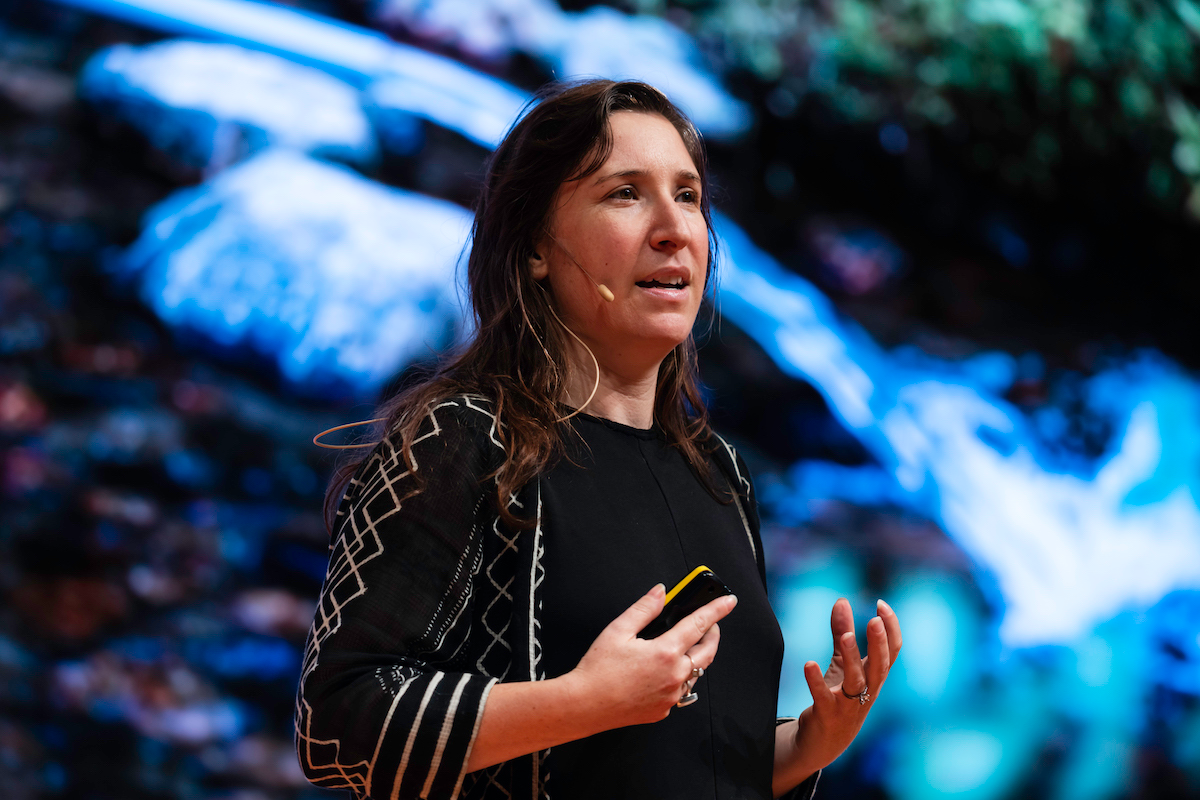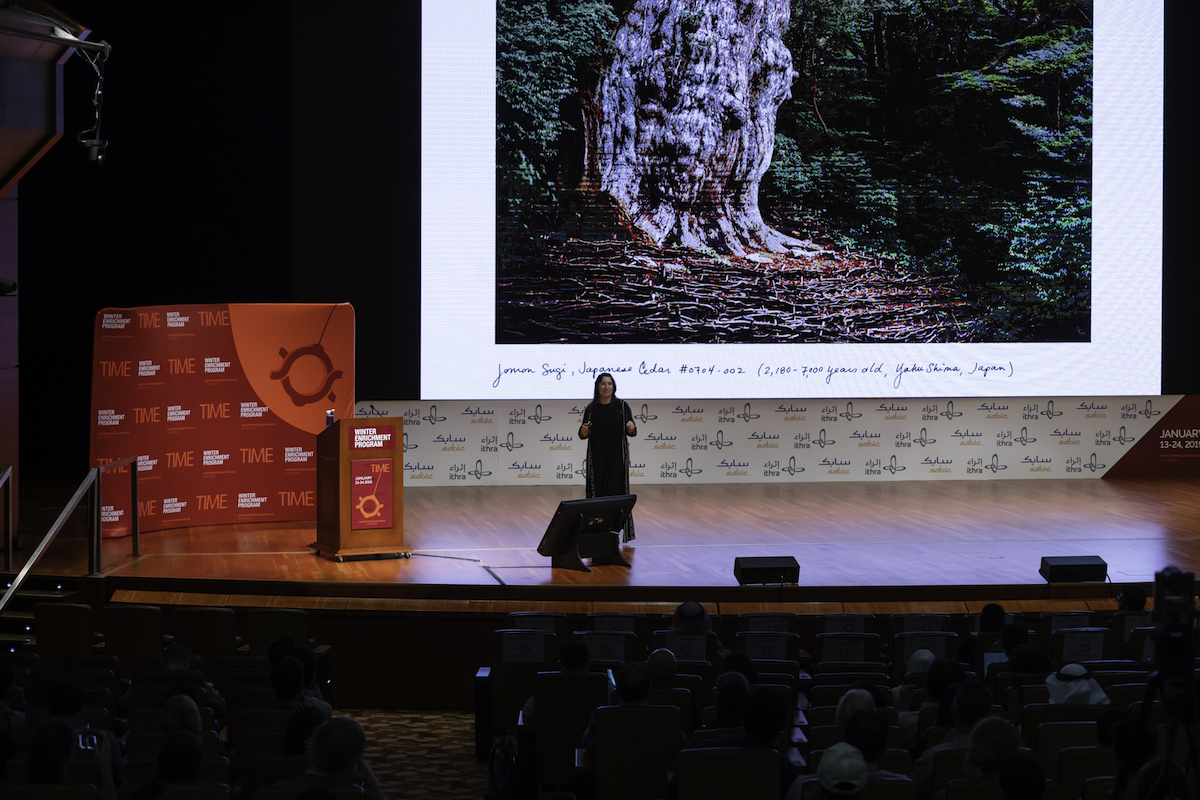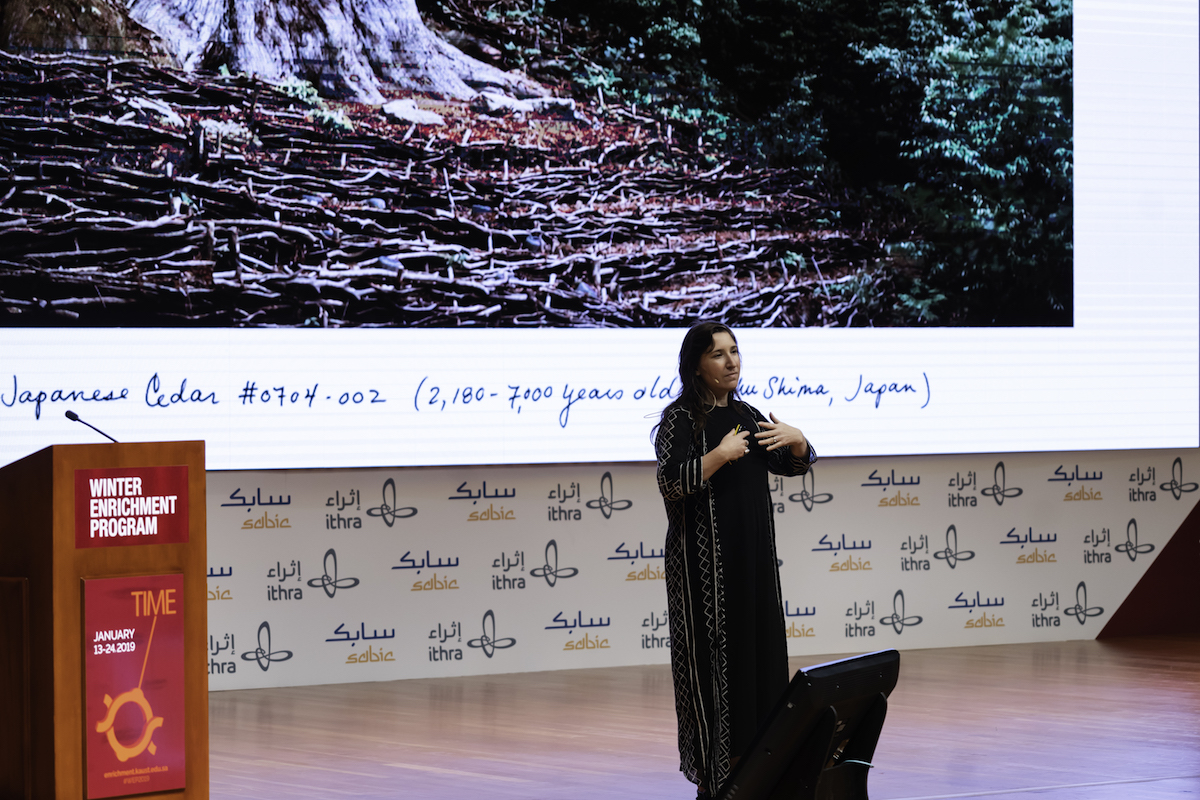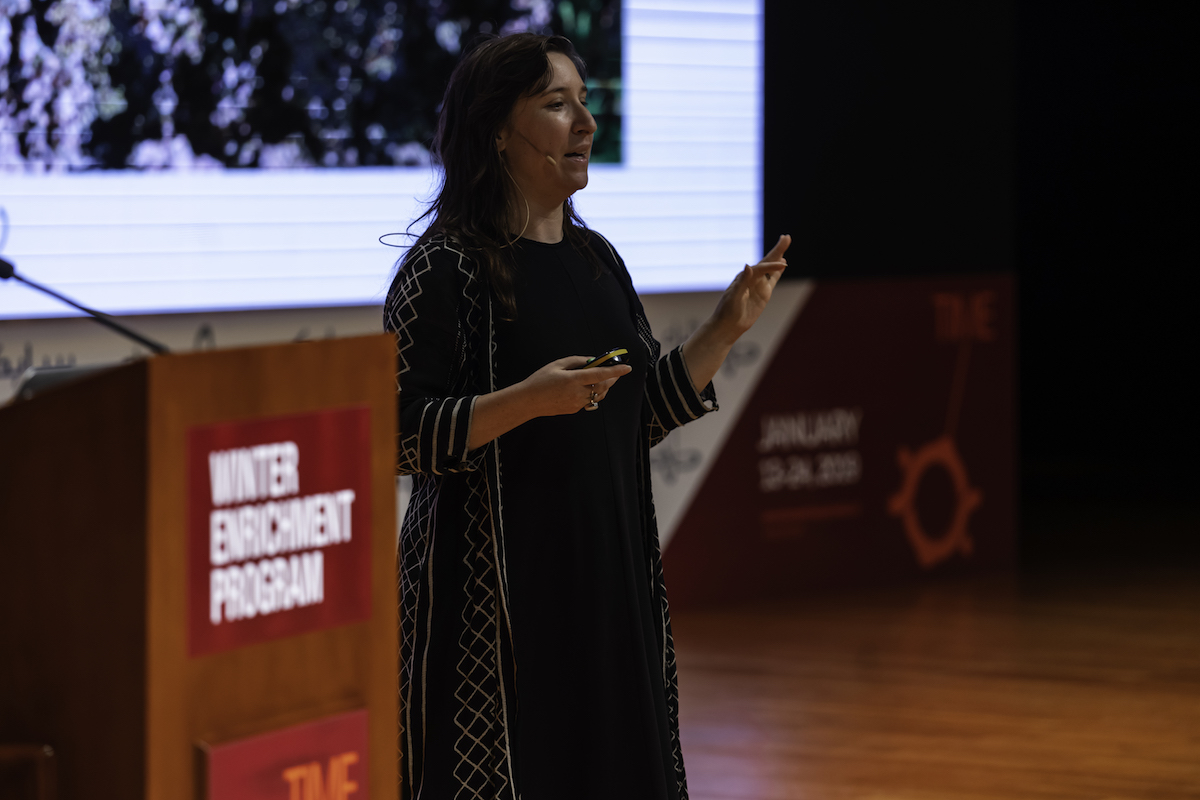Rachel Sussman: All the time in the world

American contemporary artist Rachel Sussman speaks to the KAUST audience on campus about combining art and the concept of time during the 2019 Winter Enrichment Program. Photo by Andrea Bachofen-Echt.
-By Tanya Petersen, KAUST News
Have you ever thought about the oldest living thing in the world and wondered what it might be? Would it be a tree, a coral or moss on a rock?
After a trip to Japan in 2004 and a visit to a thousands-of-years-old tree on the island of Yakushima, American contemporary artist Rachel Sussman spent 10 years on one of her larger projects—not just thinking about what the oldest living things may be, but also documenting them as part of her deeply personal quest to engage with time.
"I was interested in making art that speaks to people, [and] I was also interested in philosophical thinking about issues surrounding what it means to be a person in the world and what it means to be alive...I came up with this idea that combines art, science and philosophical thinking around deep time...to start to frame our relationship with deep time thinking," Sussman said.
It was her quest to engage with time and her artistic and philosophical journey that Sussman shared in a keynote speech on January 20 as part of KAUST's 2019 Winter Enrichment Program (WEP).

Artist Rachel Sussman decided to photograph 30 different representative species that had individually been alive for 2,000 years or longer in her 'Oldest Living Things in the World' project. Photo by Andrea Bachofen-Echt.
Why 2,000 years? Sussman said she wanted to draw attention to the shallowness of human timekeeping. For example, why is it 2019 right now and not 4-billion 500-million 2019? She began playing with the idea of how we humans could change our relationship with time.
"I set out on this journey and I had to figure out where to start. It's not like there was a list of all the oldest organisms because this project hadn't been done before," she explained. "I thought I was going to find an evolutionary biologist who would partner with me and co-author the book, so I met a few and they said, 'I'm not qualified to do this. You're talking about [fungi] and bacteria and plants and animals, and I do one thing of this one subset of this one species.' So instead of working with one scientist, I worked with 30!"
Sussman photographed everything from a 2,000 year old baobab tree in Kruger National Park in South Africa to a huge brain coral in Trinidad and Tobago and stromatolites in Western Australia.

A Japanese cedar that is over 2,000 years old is showcased by artist Rachel Sussman during her KAUST 2019 Winter Enrichment Program lecture. Photo by Andrea Bachofen-Echt.
One of the oldest known living things in the world is a bacterial colony living in Siberia in the permafrost. Named Siberian actinobacteria, it is between 400 to 600 thousand years old. What Sussman found particularly interesting about it was that it hadn't been locked away dormant in the ice—rather it had been living, slowly growing and DNA-repairing for around half a million years.
Perhaps her favorite organism of the entire project was similarly slow-growing—a 3,000-year-old Greenland lichen that adds one centimeter every 100 years.
Sussman pondered what it would feel like to live on a rock in that landscape and to spend your entire life growing just one centimeter.

Contemporary artist Rachel Sussman noted during her keynote lecture that she 'came up with this idea that combines art, science and philosophical thinking around deep time...to start to frame our relationship with deep time thinking.' Photo by Andrea Bachofen-Echt.
For Sussman, who said she is thinking about time—deep time, long term thinking—this is perhaps the ultimate purpose of her work.
"The idea with my art is to make a personal connection—to use it as a way point to connect, to make sense of, to personalize the experience of time," Sussman noted. "Why is that important? Because thinking about deep time leads to long-term thinking and long-term thinking is absolutely required now more than ever on our planet."
Related stories:
- A race against time
- Muslim civilization enriches the world
- How does the universe work?
- Our biological clocks

